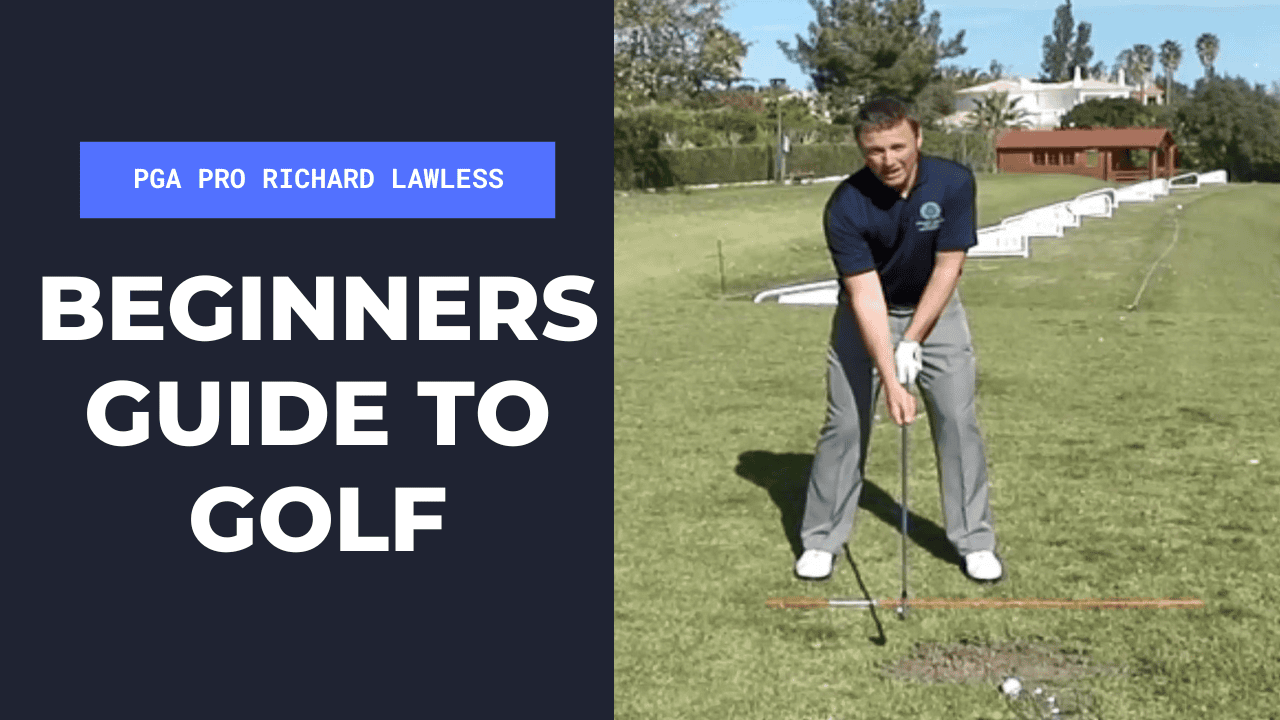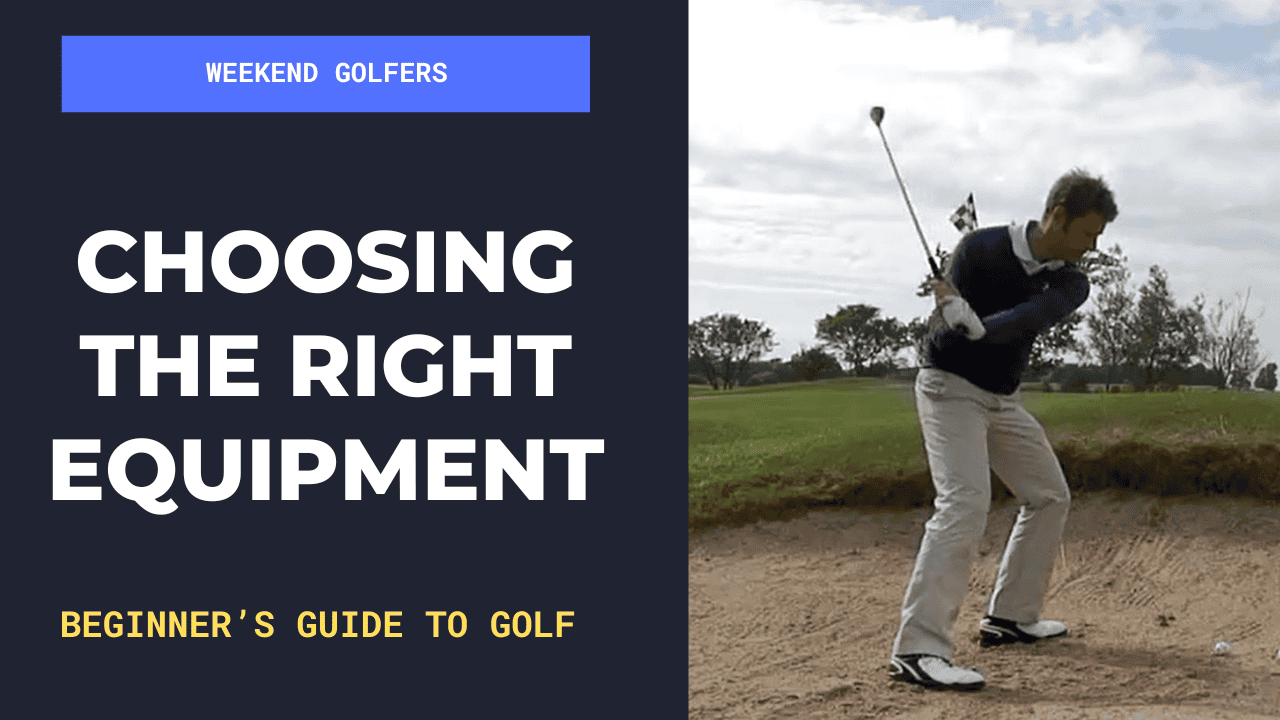Here’s our guide for choosing the Golf clubs, balls, and gear choices for you, when you first get started playing golf
As a beginner golfer, selecting the right equipment can feel overwhelming.
However, understanding the basics of golf clubs, balls, and essential gear will help you make informed choices that can enhance your performance and enjoyment of the game.
Here’s our straightforward guide to get you started.
Golf Clubs
Types of Clubs
Golf clubs come in several types, each designed for specific situations on the course:
Drivers:
- Purpose: Used for long-distance shots off the tee.
- Characteristics: Look for a club with a larger head for better forgiveness on off-center hits. A loft between 10.5 to 12 degrees is good for beginners.
Fairway Woods
- Purpose: Used for long shots from the fairway or rough, and off the tee on shorter holes.
- Characteristics: Fairway woods typically have a larger clubhead than irons and a more angled face, making it easier to hit the ball from various lies. A common option for beginners is a 5-wood, which is versatile for both distance and accuracy.
Hybrid Clubs
- Purpose: Designed to combine the benefits of both irons and fairway woods, making them easier to hit than long irons.
- Characteristics: Hybrids have a shorter shaft and a wider clubhead than traditional irons, providing better control and forgiveness on off-center hits. They are often labeled with the corresponding iron number (e.g., a 4-hybrid replaces a 4-iron) and can be a great option for beginners who struggle with long irons.
Irons:
- Purpose: Ideal for approach shots and mid-range distances.
- Characteristics: A beginner set typically includes 5-iron to 9-iron. Lower-numbered irons (3-iron, 4-iron) are harder to hit and can be replaced with hybrids.
Wedges:
- Purpose: Used for short shots around the green, such as chipping and pitching.
- Characteristics: A pitching wedge (usually included in iron sets) and a sand wedge (for bunkers) are essential. There are also higher loft Lob wedges, and Gap wedges which sit between a Pitching Wedge and a Sand Wedge and which are there to keep the loft gaps between clubs consistent
Putters:
- Purpose: Designed for rolling the ball into the hole on the green.
- Characteristics: Choose a putter that feels comfortable in your hands. There are various styles (blade, mallet) to suit different preferences
Golf Balls
Types of Golf Balls
Choosing the right golf ball can also impact your game:
Two-Piece Balls:
- Best For: Beginners.
- Characteristics: These balls are more durable and provide good distance. They typically have a hard cover and are affordable.
Three-Piece Balls:
- Best For: Intermediate players.
- Characteristics: These offer more spin and control, especially around the greens.
Four-Piece Balls:
- Best For: Advanced players.
- Characteristics: Designed for maximum control and performance but may be unnecessary for beginners, and they cost more than you will like to know
Pro Tip
Start with a two-piece ball that offers good distance and durability.
As you gain experience and develop your skills, you can experiment with other types to find what suits your game best.
Essential Gear
In addition to clubs and balls, having the right gear can make your golfing experience more enjoyable:
Golf Bag
Choose a golf bag that is lightweight and easy to carry.
Look for one with ample pockets for storing accessories and personal items.
Cart bags are great if you plan to use a golf cart, while stand bags are perfect for walking the course.
Golf Shoes
Investing in a good pair of golf shoes is important for comfort and stability, especially if you are walking the golf course. you’ll likely walk several miles and the last thing you want is sore feet.
Look for shoes with spikes or soft traction to ensure good grip on the course. Comfort is key, so try on several pairs to find the best fit.
Golf Tees
Golf tees are used to elevate the ball for your first stroke on each hole.
They come in various heights; choose a height that suits your driver and playing style.
Consider using biodegradable tees for an eco-friendly option. Bamboo seems to be the current tee of choice for many golf courses and pro shops
Golf Gloves
A golf glove serves several important purposes:
- Enhanced Grip: It provides a better grip on the club, helping to prevent slipping during swings, especially in humid or wet conditions.
- Comfort: A glove can cushion the hands, reducing fatigue and blisters, allowing for a more comfortable grip throughout your round.
- Consistency: Wearing a glove can help promote a consistent grip and swing feel, which can improve your overall performance.
Many golfers wear just one glove on their lead hand (left hand for right-handed golfers and vice versa), but some choose to wear gloves on both hands for added comfort.
Choose a glove that fits snugly but comfortably, and consider getting a backup pair in case one gets wet.
Buying Your Equipment
Choosing the right golf equipment as a beginner doesn’t have to be complicated or expensive
Focus on getting a basic set of clubs, a suitable golf ball, and the basic gear to make sure you have a good experience.
Don’t be afraid to buy second hand to begin with. make sure you like the game before you start paying for any of the high priced equipment.
As you progress, you can explore more options that are custom fit for you, until then, save your money
And remember, the most important aspect is to enjoy the game and have fun on the course!
Are You New To Golf?

If you’re new to playing golf, I invite you to join my video coaching program, Beginner’s Guide To Golf which will help you start your journey on the right footing and will likely lead to you enjoying the game even more.
